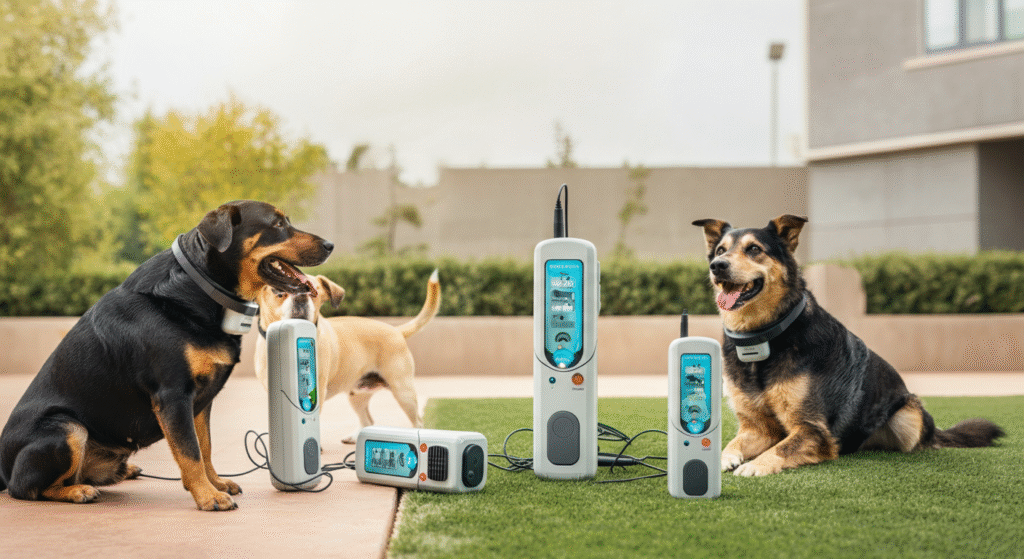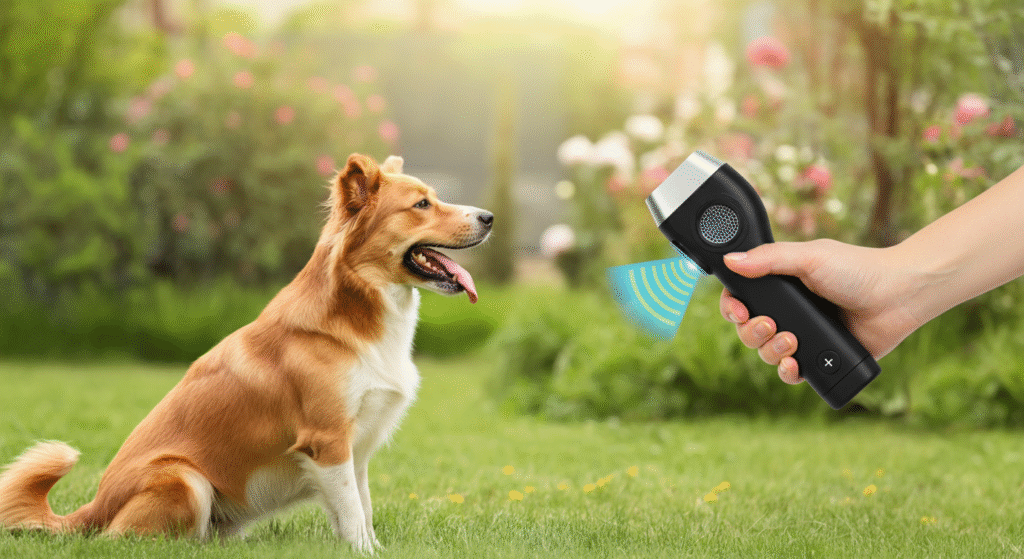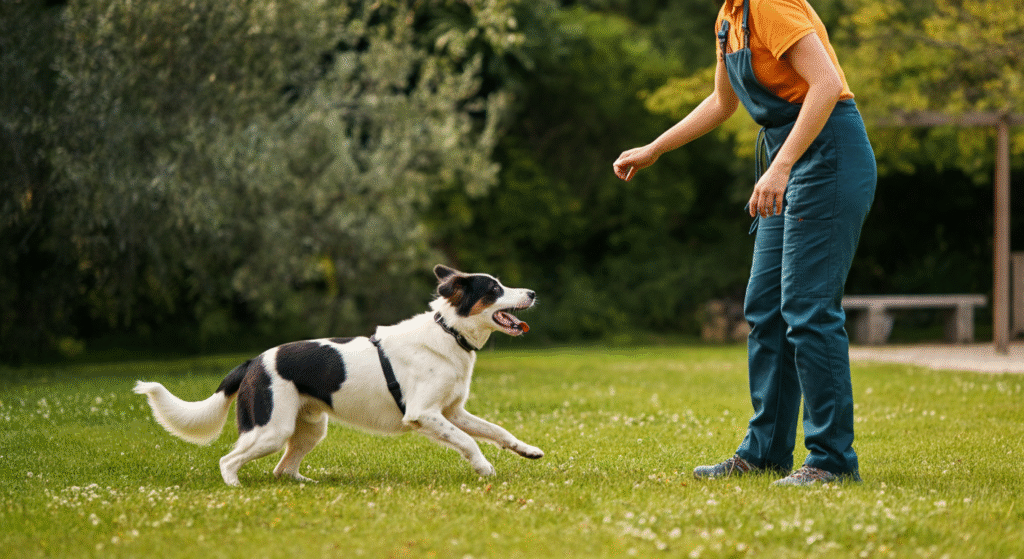Dogs are loyal, lovable companions, but even the most devoted pet owner can feel overwhelmed when their dog barks excessively. While barking is a natural way for dogs to communicate, constant barking can become a problem for pet owners and neighbors. That’s where an anti barking device can help.
This guide will explore the reasons behind excessive barking, the different types of bark deterrents available, and how to choose a safe and effective solution for your furry friend. Whether you’re a new dog owner or someone dealing with a vocal pup, this post will help you make an informed choice.
Understanding Why Dogs Bark Excessively

Before jumping into solutions, it’s important to understand why your dog is barking in the first place. Dogs bark for a variety of reasons:
- Alert barking: When they hear a noise or see a stranger.
- Attention-seeking: They want food, play, or affection.
- Separation anxiety: Dogs left alone too long may bark out of distress.
- Boredom: Lack of stimulation can lead to unwanted behaviors.
- Territorial behavior: Dogs often bark to protect their space.
Addressing the root cause is key. An anti barking device can help manage symptoms, but combining it with positive training will deliver the best results.
Types of Anti-Barking Device Available

Several kinds of devices are on the market, each designed to discourage barking in different ways. Here are the most popular options:
Ultrasonic Anti Barking Device:
These emit a high-pitched sound (inaudible to humans) when your dog barks. The sound is unpleasant to dogs and interrupts their barking pattern. These are non-invasive and widely used.
Vibration Collars:
These collars vibrate gently when your dog barks. They act as a distraction rather than a punishment, making them a good choice for smaller or sensitive dogs.
Spray Collars:
Spray collars release a puff of citronella or water when triggered by barking. The smell or sensation surprises the dog, discouraging the behavior.
Static Correction Collars:
These deliver a mild electric pulse when barking is detected. While effective for some dogs, they should only be used after consulting a professional trainer due to the risk of stress.
Handheld Deterrent Devices:
These allow you to manually trigger an ultrasonic sound when your dog barks or misbehaves. They’re great for training sessions and public use.
Each type has its pros and cons. The key is to match the device to your dog’s size, breed, temperament, and the root cause of their barking.
How Ultrasonic Anti Barking Device Works

Ultrasonic anti barking devices are among the most popular choices for pet owners because they’re safe, easy to use, and effective. But how do they work?
When your dog barks, the device detects the sound and instantly emits an ultrasonic noise. Dogs find this sound irritating, which causes them to stop barking. Over time, they learn to associate barking with the unpleasant noise and reduce the behavior.
Some devices are:
- Automatic: They detect barking and respond on their own.
- Handheld: You control when to activate the sound.
These devices are best for dogs that respond to sound cues and can be used indoors or outdoors.
💡 Affiliate Tip: One highly-rated option is the 🔽🔽🔽
Dog Bark Deterrent Devices for Own or Neighbor’s Dog Ultrasonic Dog Training Device Safe & Effective Portable Anti Barking Device for Dogs Indoor Outdoor Use Orange
It’s portable, easy to use, and suitable for most dogs.
Training Techniques to Complement Deterrents

While an anti barking device can help curb barking, it works best when paired with proper training. Here are a few techniques to reinforce positive behavior:
- Reward Quiet Behavior: Use treats and praise when your dog is calm and quiet.
- Redirect Their Focus: If your dog barks at people passing by, redirect their attention with a toy or command.
- Consistent Commands: Use phrases like “quiet” or “enough” consistently when training.
- Avoid Yelling: Dogs may see yelling as encouragement or join in.
The goal is to teach your dog why barking isn’t appropriate in certain situations, not just punish the behavior.
Safety Considerations for Pet Owners
Your dog’s safety should always come first when choosing a bark control method. Here are some tips to ensure you’re using an anti barking device responsibly:
- Read Instructions Carefully: Misuse can lead to confusion or anxiety.
- Avoid Prolonged Use: Don’t leave deterrent collars on all day. Use them during training periods.
- Check for Discomfort: Monitor your dog’s behavior for signs of distress.
- Choose Age-Appropriate Devices: Puppies under 6 months may be too young for certain devices.
If your dog has any medical conditions or is showing signs of stress, consult a vet before using any device.
Choosing the Right Anti Barking Device for Your Dog

With so many options, how do you pick the right one? Here are some factors to consider:
- Dog Size and Breed: A Great Dane and a Chihuahua have very different needs. Ensure the device is appropriate for your dog’s size.
- Sensitivity Level: Some dogs respond better to vibrations, while others need sound-based feedback.
- Environment: If your dog barks mostly outside, choose a weather-resistant device.
- Ease of Use: Consider how simple the device is to set up and operate.
💡 Affiliate Pick: The Dog Bark Collar for Large Medium Small Dogs, Rechargeable Smart Bark Collar, Anti Barking Training Collar with 5 Adjustable Sensitivity Beep Vibration (Black) is compact, rechargeable, and perfect for both indoor and outdoor use.
Making Informed Decisions for Barking

Investing in an anti barking device isn’t about silencing your dog completely—it’s about managing excessive barking in a safe, humane way. The best results come from combining a good device with consistent training and understanding your dog’s needs.
Here’s a quick checklist before you decide:
- Identify the cause of barking
- Try training first
- Choose a safe and appropriate device
- Use it consistently, but not excessively
- Watch your dog’s response and adjust as needed
Final Thoughts
Dealing with a barking dog can be frustrating, but there are humane and effective solutions. An anti barking device can be a helpful tool in your pet care toolkit—especially when paired with positive reinforcement training. Always choose safety, kindness, and understanding when correcting unwanted behaviors.
🐾 Ready to take the next step? Check here to learn about Natural Pet Shampoos.
Your dog isn’t trying to be bad—they’re trying to tell you something. With the right approach, you can restore peace and help your pup become a well-behaved member of the family.



